ForgottenTours have been, for the past year and a half, typically held under threatening skies, but the weather for the scheduled Tour 31 on July 29, 2007 not only threatened, but delivered, forcing a move to the following Sunday, August 5th. It was perhaps the nicest day of the month so far and so, in a special evening start to beat the heat, Tour 31 in Little Neck and Douglaston, the far northeast of Queens, was finally under way with about 25 ForgottenFans…
From the ForgottenBook: A walk through the neighborhoods of the northern part of Queens, College Point, Whitestone, even Bayside, will reward the urban enthusiast with glimpses of the small Long Island North Shore towns they used to be. There are town centers at 14th Avenue and 150th Street in Whitestone, along College Point Boulevard between 14th and 18th Avenue, and Bell Boulevard between Northern Boulevard and 35th Avenue. The spaces between these town centers, once meadows or farmland, have been filled with block after block of one and two-family homes and seem to have been thoroughly “folded” into a uniform Queens fabric: definitely not the dense, urban feel of a Soho or a Park Slope, but not the thoroughly suburban atmosphere of a Levittown or Hicksville. The two “northeasternmost” of Queens’ neighborhoods, Douglaston and Little Neck, however, have a different tone: they somehow seem carved out of the rather exclusive, monied precincts of the Nassau County townships immediately to the east, Great Neck and Manhasset. Both neighborhoods are served by a short shopping strip along Northern Boulevard, and the area’s hilly topography doesn’t lend itself to block upon block of similar-looking ranch houses.
For centuries before the mid-1600s the Matinecock Indians, a branch of the Algonquin, had lived on the peninsula where Douglaston Manor is today as well as lands to the south and east, including today’s Little Neck (a “neck” here meaning a plot of land. The term is also seen in adjoining Great Neck as well as Gravesend Neck in Brooklyn.) Little Neck Bay’s wealth of seafood, including the huge oysters that grew here then, sustained the tribe. In the 1600s. European settlers also turned their attention to the area, not only for the clams but for the harbor, which offered easy access to water traffic. The British and Dutch soon had bartered, or some say swindled, the Matinecock out of much of their ancestral lands, except for a small portion called Madnan’s Neck (possibly named for settler Ann Heatherton, “Mad Nan” although it could also have been shortened from the Indian name for the area, Menhaden-ock, “place of fish.”) In 1656, Thomas Hicks — of the Hicks family that eventually founded Hicksville — forcibly drove out the “last of the Matinecock” in the Battle of Madnan’s Neck at today’s Northern Boulevard and Marathon Parkway.
We met at the Little Neck Long Island Rail Road station; there has been a stop on Little Neck Parkway, originally a road leading to the formerly busy dockside area of Little Neck Bay, since October 27, 1866. Now, as then, it runs at grade and Little Neck Parkway has one of the few RR grade crossings in NYC.
WAYFARING: ForgottenTour 31, Little Neck/Douglaston (open in separate window)
The streets immmediately south of the RR station were part of the Benjamin Woolley farm in the 1800s; he sold the LIRR a right-of-way. Developers Rickert and Finley purchased the farm and developed a community called Westmoreland in the first decade of the 1900s. Buyers of homes had to agree to restrictive covenants that ensured the unity of appearance of the neighborhood, but the homes were built in a variety of styles with Tudor being predominant. Today Westmoreland remains residential, but newer homes being built would probably not sit well with Westmoreland’s original residents.
(LEFT) Pale yellow PS 94, built in 1918 at Little Neck Pkwy. and 42nd Avenue, features Little Neck’s World War I memorial. Eric Weaver
We paused at a clock tower on Westmoreland Street and Northern Boulevard mounted on a Tudor building. I was stumped about what it could have been, so if any Little Necker knows, fill us in. Eric Weaver
The former Little Neck Theater, 254-18 Northern Blvd., opened January 7, 1929. It was built on Van Nostrand property, one of the longstanding families in Little Neck; the house that formerly stood here had been owned by William Van Nostrand from 1905 to 1930 was moved one block to Pembroke Avenue and 254th Street, where, altered greatly since 1929, it stands today (right). The house was built in the mid-1800s; before it was in the Van Nostrand family it had been owned by Capt. Valentine Peters, who ran a general store from part of the property. When Peters owned it the house was called “Old Oaks” as it was surrounded by large oak trees.
The theater closed down in the 1980s after its air conditioning failed. Presently, a variety of businesses lease space there. photo left: Christina Wilkinson
The Moderne bank at Little Neck Parkway and Northern Blvd., with its formidable eagle, was designed in 1927 by Paul LaVelle, who had previously worked with Stanford White. Little Neck National Bank was initiated by local realtor Bryce Rea, William Hutton and the aforementioned William Van Nostrand. It has been a Chase branch for over 30 years. photo left: CW
Across the street from the Chase is the Scobee diner, where future CIA director George Tenet bussed tables back in the Super Seventies.
With the sun setting we didn’t have a lot of time to explore the hills south of Northern Blvd. but we did wind around on Browvale Lane, with its mix of cottages and larger mansions. It is literally on the “brow of the vale” through which Northern Boulevard, formerly the Flushing and North Hemspstead Turnpike, has run since the mid-1800s. Many houses are set back on the hill, and the owners must navigate several flights of steps to reach the door. photo right: Eric Weaver
Queens County Savings Bank, at Northern and Browvale, lies on an ancient Matinecock Indian burial ground. For much of the 1800s the propert adjoing the grounds was in the Waters family of Matinecock lineage. When the road was widened in the 1930s, the remains were disinterred and moved to the Zion Church yard (see below).
Jessie Court is one of Little Neck’s many odd alleys and dead ends. The house in the center at 44-10 Jessie Court (with the sign on it) was the original LIRR Little Neck stationhouse, originally owned by Benjamin Woolley, who rented it to the LIRR. When the LIRR built its own stationhouse around 1890, the house was moved to Northern Blvd and Morgan Street. When Rickert-Finlay developed Westmoreland, the developers moved the house yet again, to this present location. CW
Cornell Lane
The Cornell family has been prominent in Little Neck for generations; progenitor Richard Cornell arrived from Long Island in 1643. A colonial-era Cornell house stood at Little Neck Parkway and Horace Harding Blvd. (now the LIE) till 1950. Cornell Lane, which parallels Jessie Court to the west, has, unfortunately, seen its share of uninviting modern houses built on it in recent years. Here’s a film clip shot by Forgotten Fan Joe DeMarco live from Cornell Lane in which your webmaster proves yet again that film is not my best medium:

Marathon Parkway (formerly 250th Street north of Northern Blvd.) was named for a former real estate development, Marathon Park. At the SE corner at Northern Blvd., we see the 1940s-vintage Little Neck post office, and the Bryce Rea real estate office in a building of considerable age, perhaps a century or so.CW
Zion
ForgottenFans enter the Zion Church driveway at Northern Blvd. and 243rd Street. Zion Church was completed in 1830 on plans from Trinity Church and St. Saviour’s architect Richard Upjohn. Wynant Van Zandt, former owner of the land where Douglas Manor is now (see below) is interred in the family vault beneath the cemetery; Van Zandt had held local services in his home before the church was built. In the last century, the church has endured two devastating fires, the worse in 1924. The present steeple was constructed after the fires. CW, EW
Little Neck’s early days featured a colorful character, the “Bard of Little Neck,” Bloodgood Haviland Cutter (1817-1906), potato farmer, poet and acquaintance of Mark Twain, who immortalized him as the “Poet Lariat” in his travelogue,Innocents Abroad. Twain poked fun at Cutter as a master of doggerel who annoyed fellow passengers on an excursion to the Holy Land in the book. Left, CW; right, EW
ForgottenFan Nigey Lennon (photo above right), author of The Sagebrush Bohemian: Mark Twain In California, tells the story of Cutter and Twain, complete with some of Bloodgood’s, um, verse…

ForgottenFans pose at the monument for the Matinecock Indians in the Zion churchyard. As we have mentioned Northern Boulevard was being graded and widened in the 1930s and the graves of the Matinecocks were discovered in the path of the roadway. They were reinterred in the Zion Episcopal Church cemetery in 1931. A stone marker, designed in two pieces on either side of a tree, is marked “Here Rest the Last of the Matinecoc(k).”
Douglaston’s RR station, at 235th Street, was built in 1962. Prior to that LIRR trains ran at grade, just as at Little Neck. That year Douglaston Parkway was bridged over the RR.
In the station plaza is a rare weeping beech tree and Douglaston’s World War I monument. CW
The quaint, old buildings on 235th Street north and south of the station are under the gun from developers, and some may not survive much longer.
At left is Douglaston’s American Legion headquarters, which, since 1932, has been located in a former firehouse, still complete with bell (left). CW
Douglas Manor
Major Thomas Wickes, a patriot originally from Huntington, owned the entire Douglaston peninsula jutting into Little Neck Bay after the Revolutionary War, and subsequently sold it to Wynant Van Zandt in the 1810s. Scotsman George Douglas purchased the peninsula from Van Zandt in 1835. The region was later developed as a suburban resort and exclusive enclave, and enjoys pleasant views of Little Neck Bay and Long Island Sound. Streets were laid out in 1906 by the Rickert-Finlay realty company, who had purchased the property from William Douglas, George’s son, and eclectic, individualistic homes were built in the area, which has always been among Queens’ most affluent. The streets have retained their original names and have ignored the Queens mania for giving every street a number. The Douglas name was appended to the area in 1876, after William Douglas donated a Long Island Rail Road stop. Today, mansions in Douglas Manor can sell for $4 million or more.
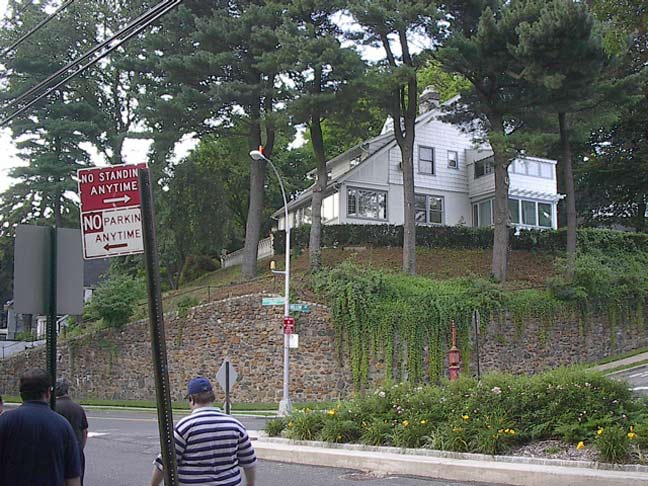
Douglaston Parkway and Willow Street. The house is set way back from the street and surrounded by a cobblestone wall marked 1929. EW
Bay Street between Douglaston Parkway and Regatta Place has a collection of spectacular Victorian-era porched houses. As Regatta Place’s name implies, boat races were held in nearby Little Neck Bay and some of these homes have wraparound porches facing the water.EW, CW
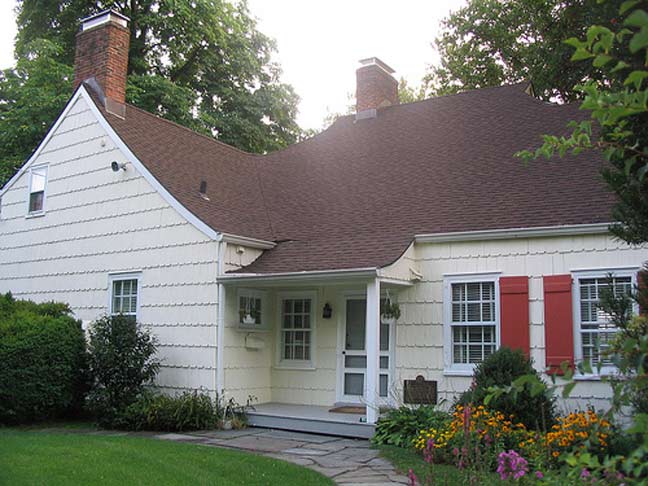
The oldest building in Douglaston dates to pre-Revolutionary days: the Cornelius Van Wyck residence (above) at West Drive and Alston Place was built in 1735, making it one of the few remaining Queens edifices from the 18th Century. The nearby Greek Revival Allan-Beville House at Center Drive and Forest Road dates to 1848, and the Douglaston Club, the former Wynant Van Zandt residence at West Drive and Beverly Road, was built in 1819. It was William Douglas’ residence for many years, as well, so it has been occupied by the two men most responsible for the settling and development of the peninsula. The young John McEnroe honed his tennis game at the Club in the early 1970s. CW
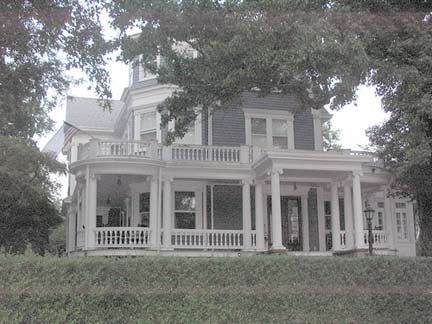
As a cloud cover settled in the light grew dim and so we decided to cut short a tour just a bit, not proceeding the to the tip of the peninsula. We cut left to Shore Road instead; this one-lane path zigzags where some of the most beautiful homes in Queens are built to take advantage of a fantastic view…CW
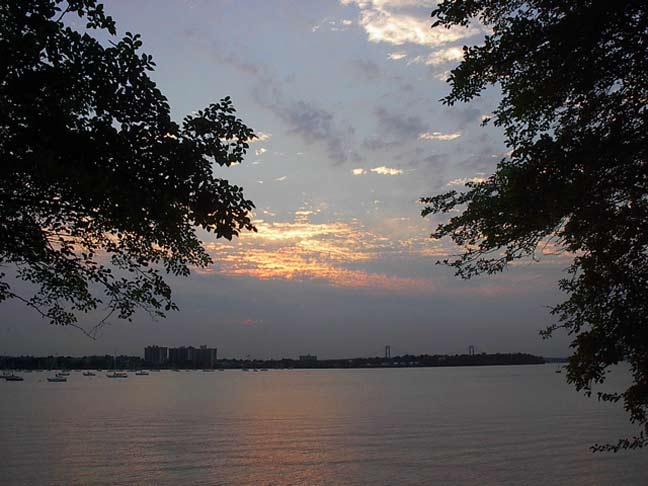
…of Little Neck Bay and the Throgs Neck Bridge.
Additional pictures from Christina.
Sources: “Little Neck Then and Now,” Loys Gubernick, ©1982 by the author; “Through the Years in Little Neck and Douglaston,” George and Ernestine Fowler, 1948

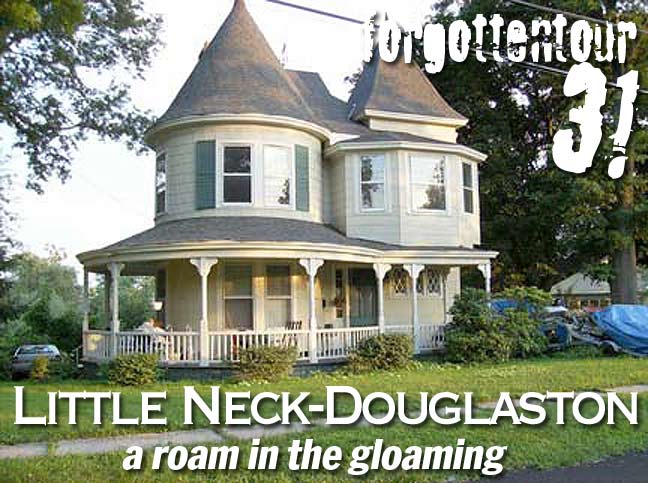
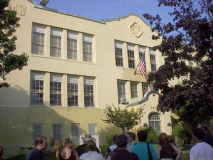
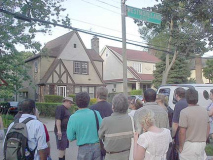
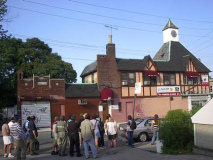
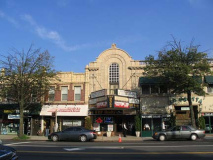
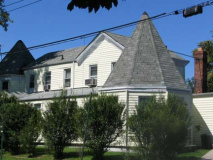


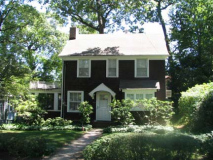
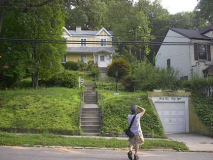
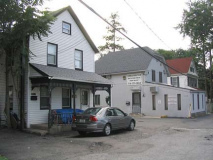
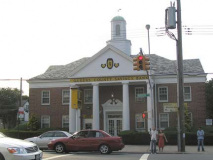
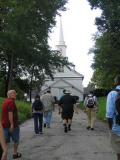
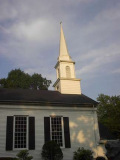
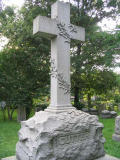
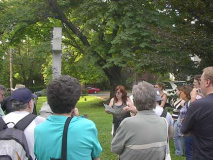
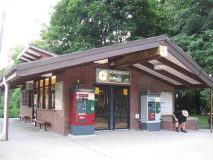
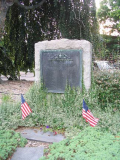

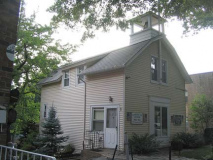
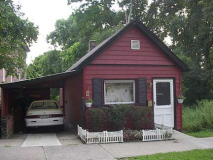
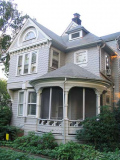
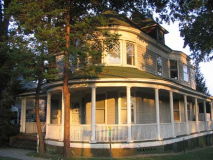
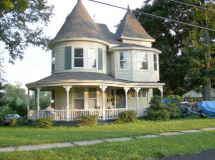
1 comment
[…] in Early Photographs [Google Books] Matinecock History [Matinecock Masonic Historical Society] Forgotten Tour 31, Little Neck/Douglaston, Queens [Forgotten New York] NEIGHBORHOOD REPORT: BAYSIDE;Matinecocks Lay Claim to Fort Totten, Citing […]
Comments are closed.